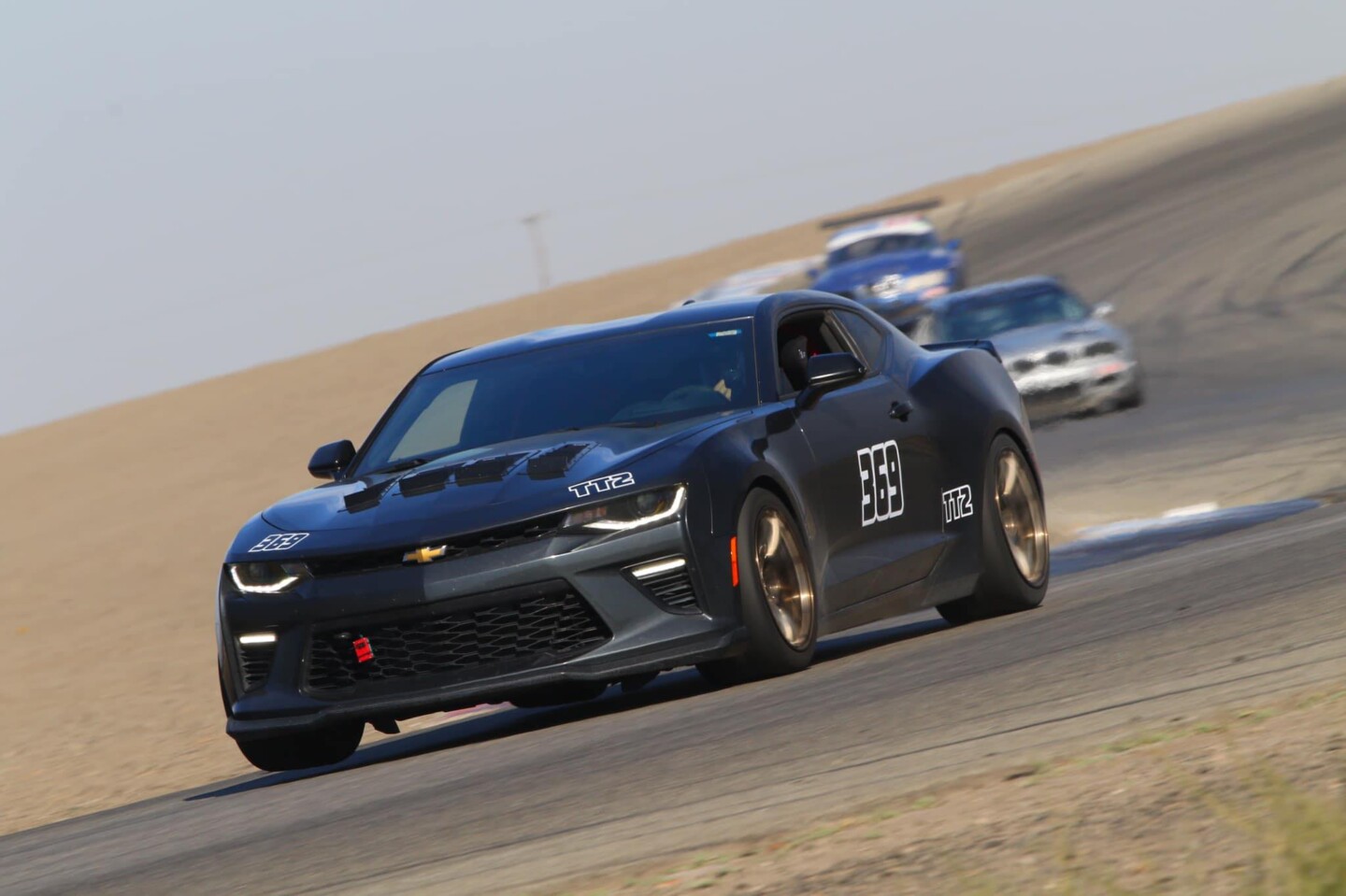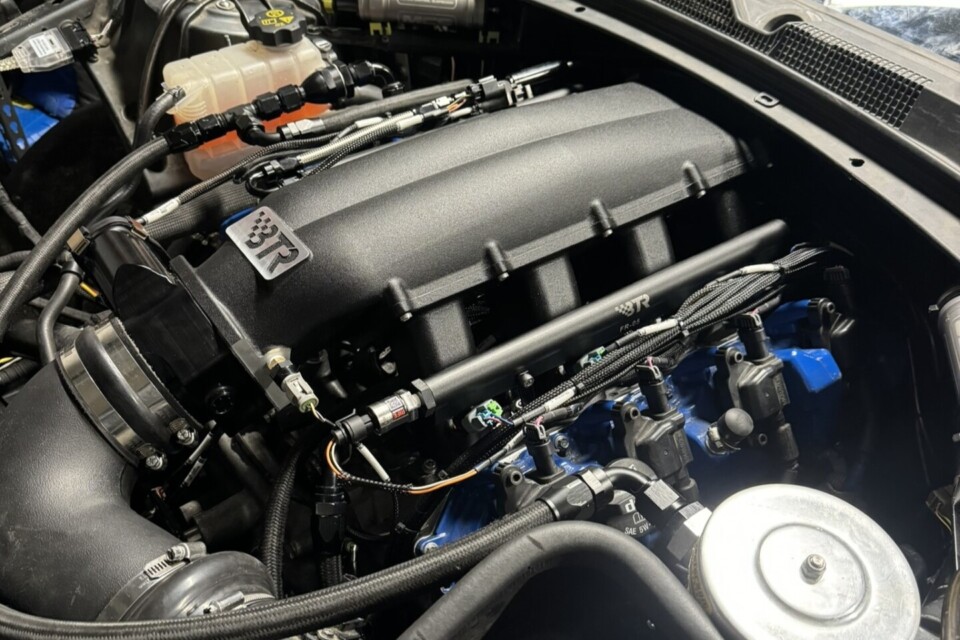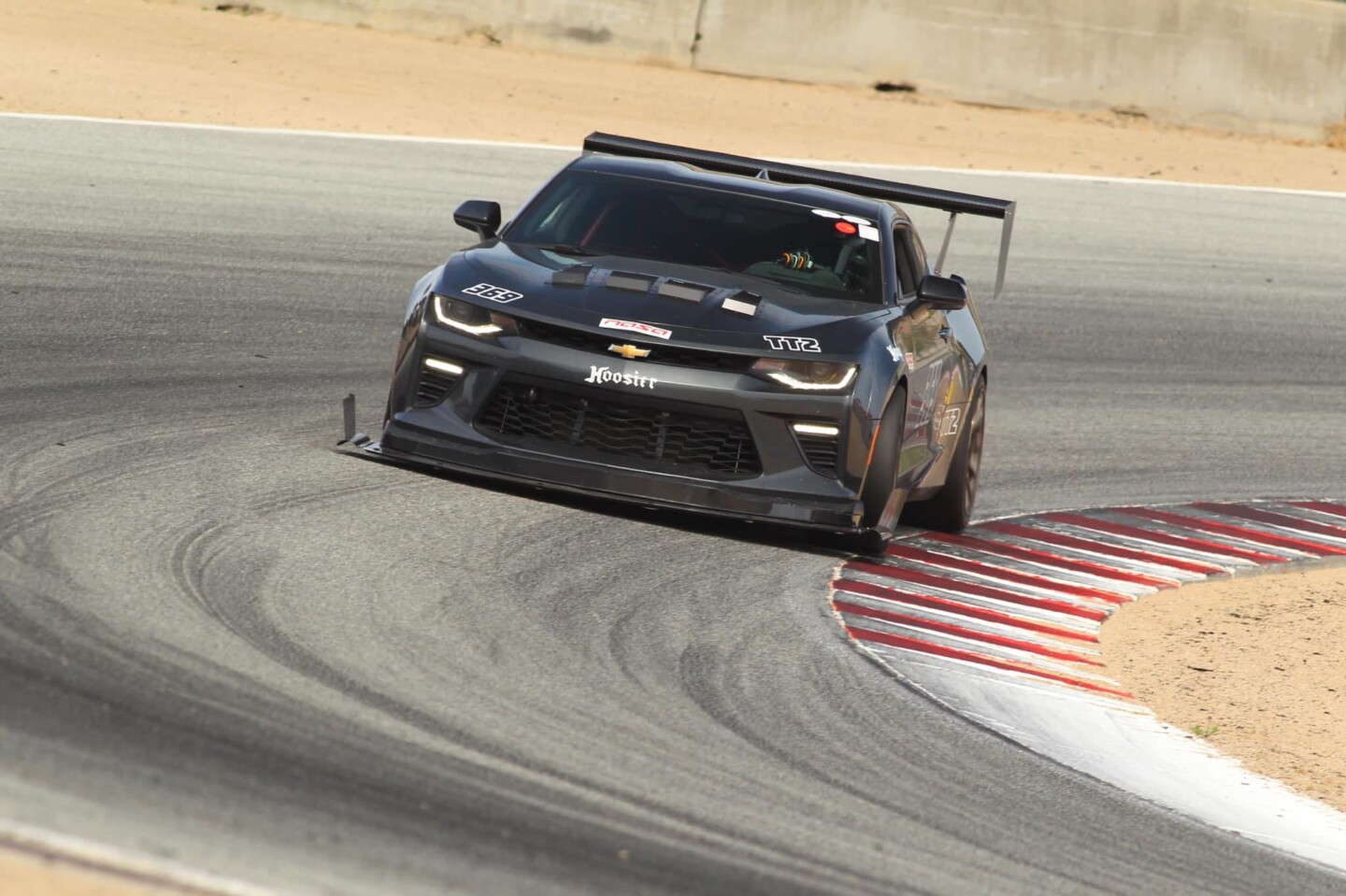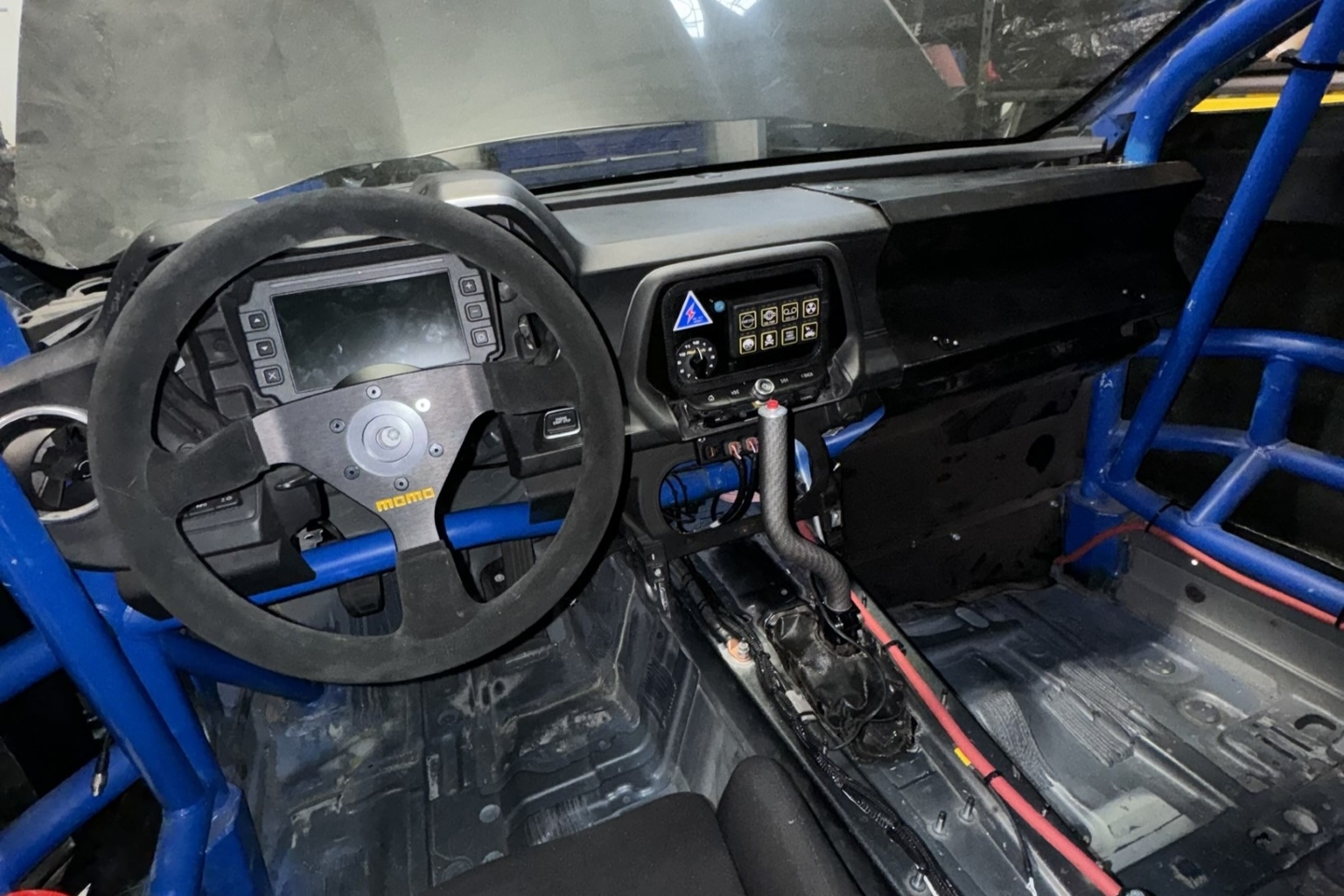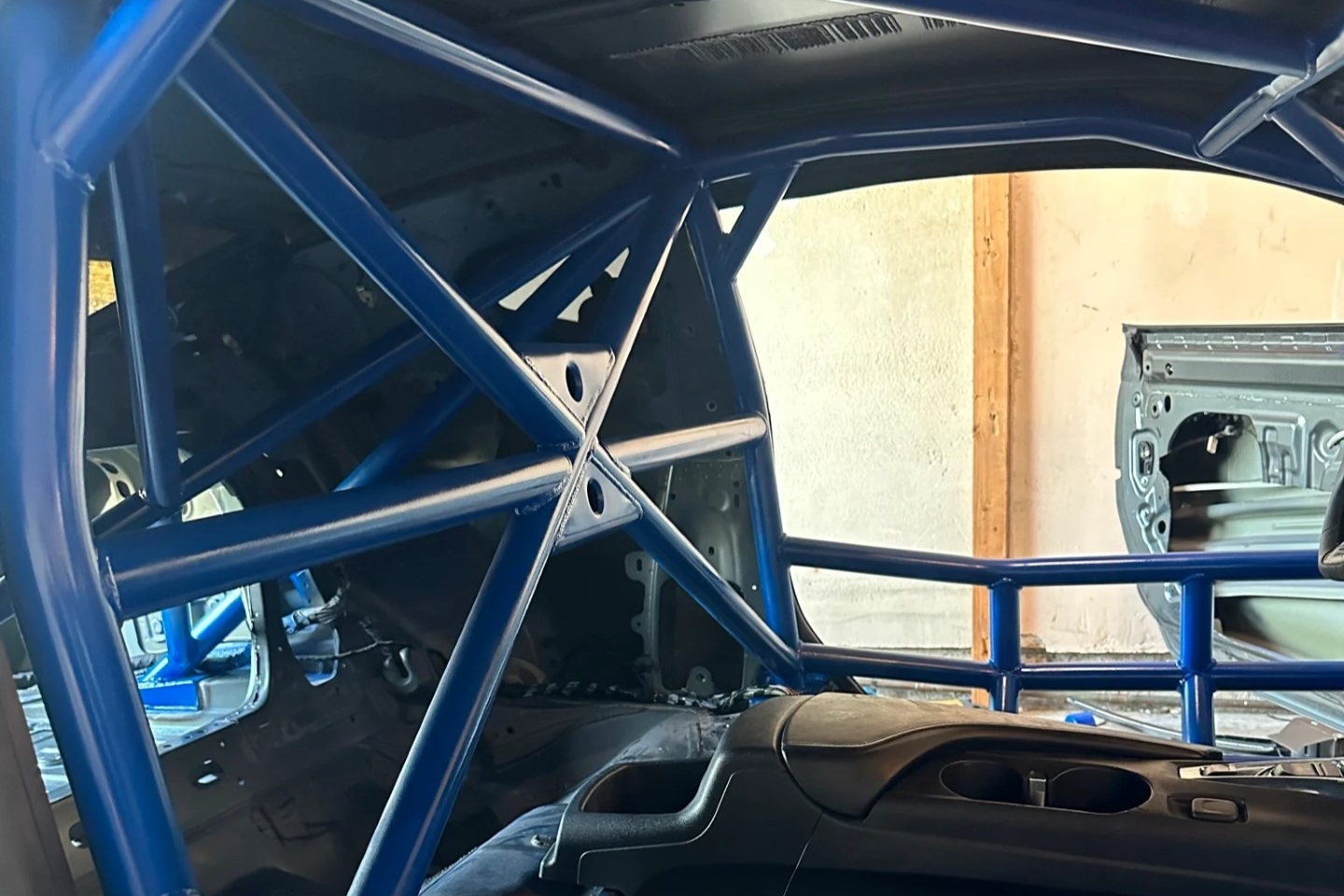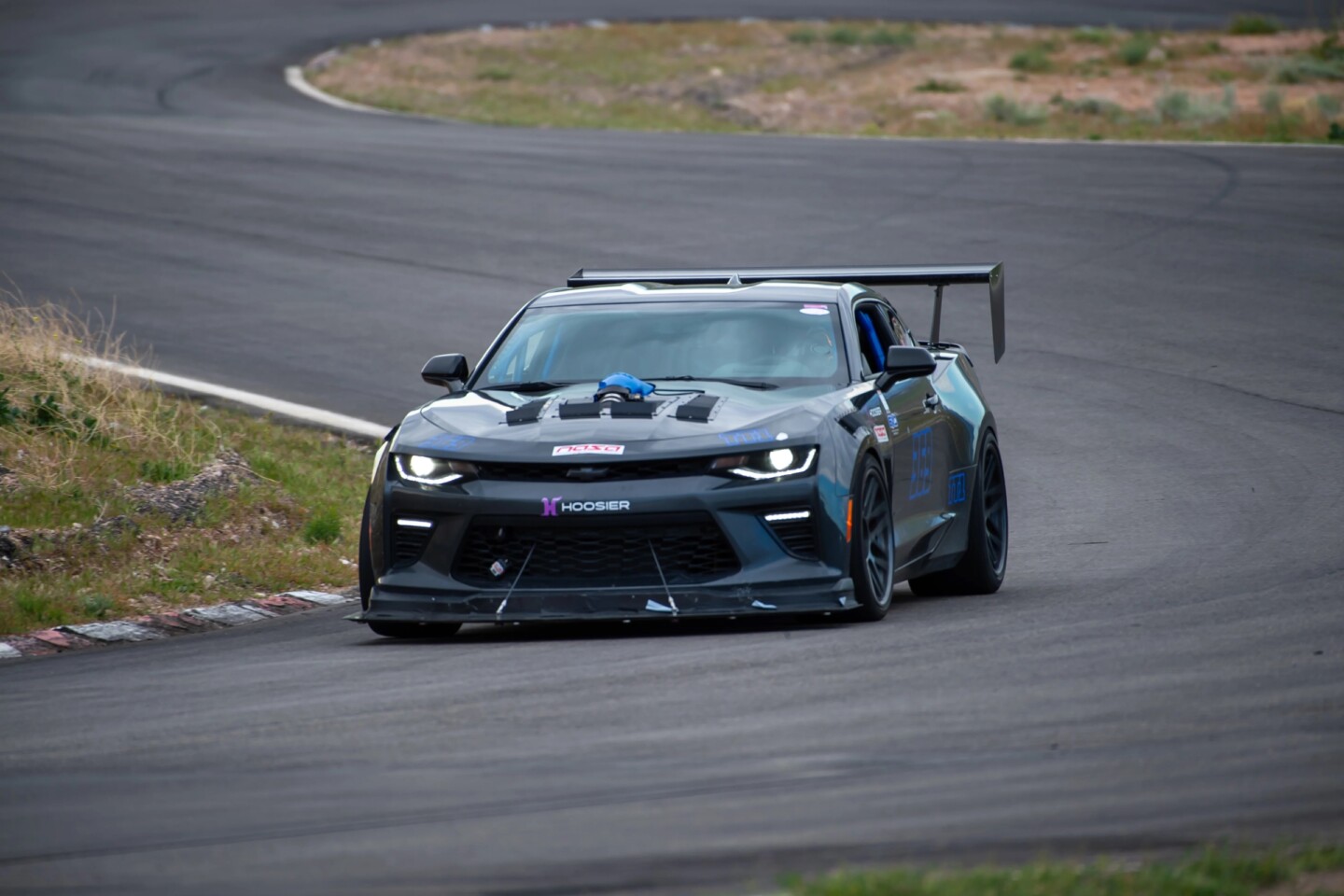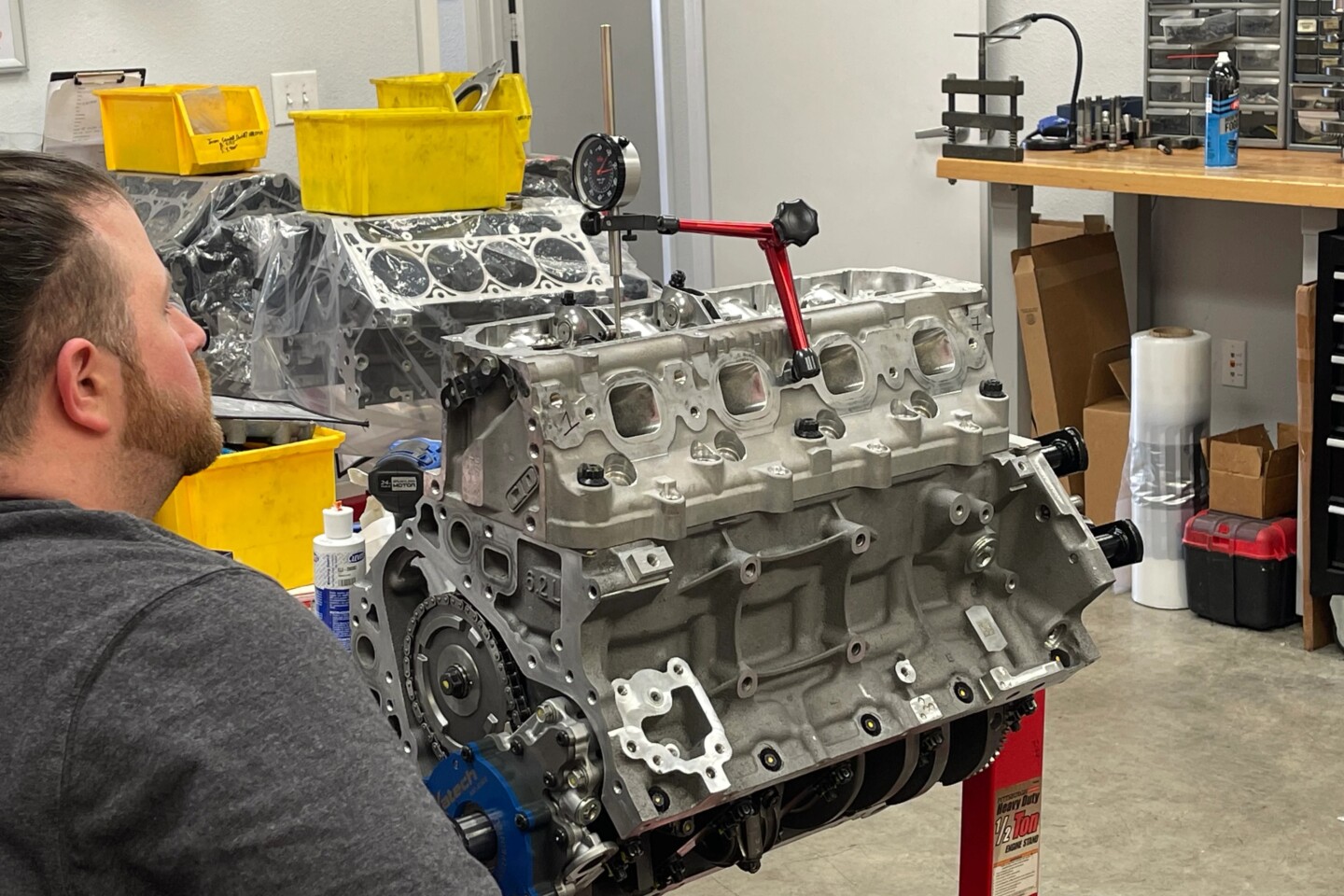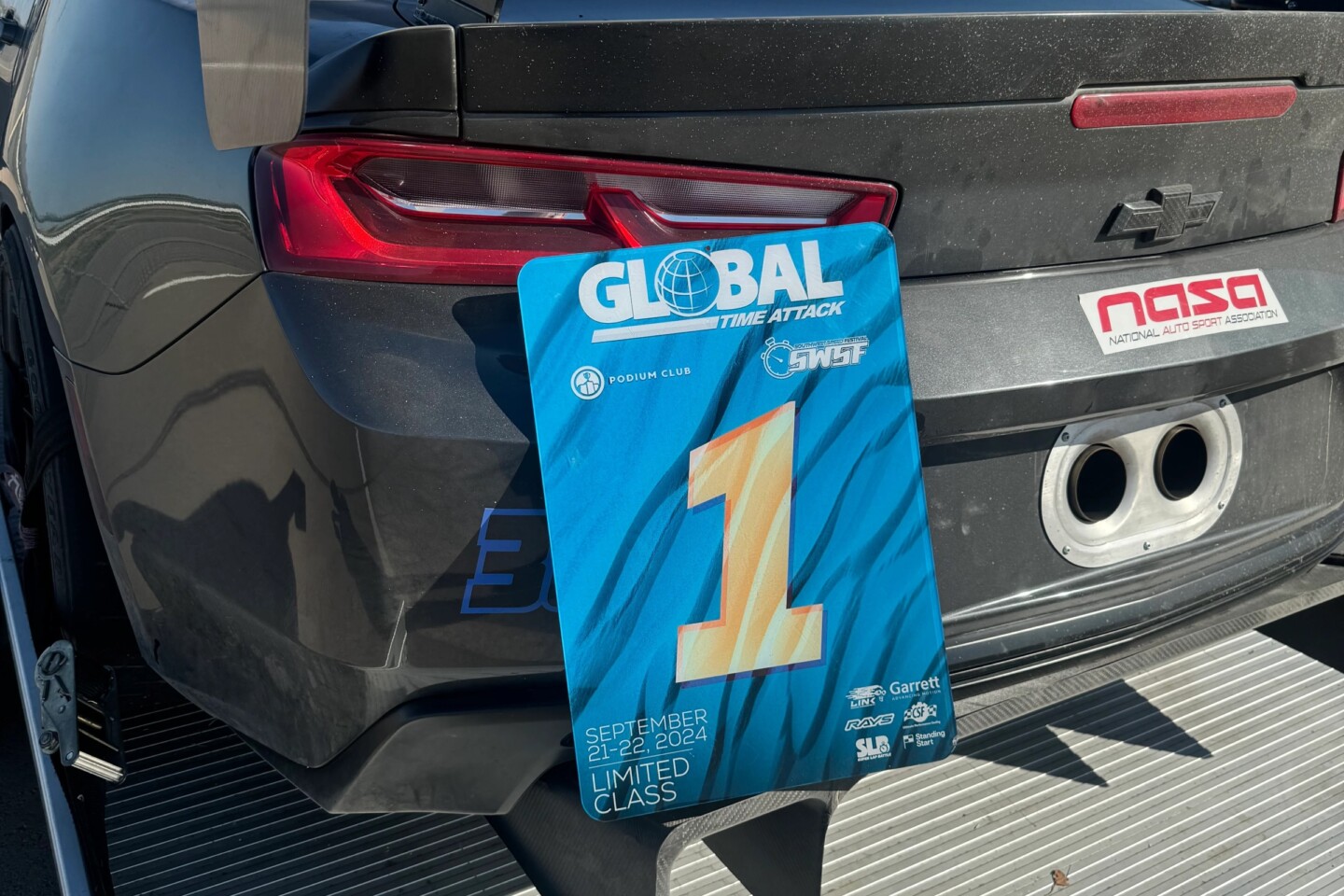Having a group of supportive friends and a little gusto might be all that’s needed to go from novice to champion in a short span. But Frank Pacheco, despite how quickly he rose up the ranks, would be the first to admit that there was more to his almost overnight success. Humility goes hand in hand with objectivity, and that was the case with Pacheco, who used his engineering background and supportive social network to educate himself as he advanced from power-hungry initiate to NASA TT Champion in just a couple of years in his road race Camaro.
His first track toy, an S550 Mustang, was overpowered and his friends let him know it. Like so many just starting out, Pacheco was charmed by grunt until he had a rude awakening. When he had to suffer the embarrassment of getting passed by a narrow-tired Foxbody with a third of the power, he recognized that this tuning route might not be best suited for the road course.
His growing group of track acquaintances suggested he worry more about the correct chassis mods the road course requires, and if he could manage it, try whatever modifications that would enable him to run repeatable laps on a regular basis.
He pushed on with this new ethos; continuing to extract more and more from cornering until he brushed the outside wall at Laguna Seca’s Turn 7. The damage wasn’t catastrophic, but he had already considered better platforms and took this as an opportunity to switch. After sampling his friend’s sixth-generation Camaro 1LE, he made an offer on that very car.
Seeing the Light
Pacheco’s new purchase was only mildly modified with Hawk DTC-60 pads, a Rotofab CAI, and an E85 tune, but it had already lapped Buttonwillow 13CW in 1:56. More importantly, this entry-level road race Camaro was reliable. Pacheco had learned that if he was to become a respected driver, he’d need to put his seat time in first, then worry about lap times.
Truly understanding what the car is doing is made easier with a confidence-inspiring chassis, so he added 19” Apex ARC-8 wheels wearing 305 and 325-section Goodyear Supercar 3Rs at the front and rear axles, respectively. He then replaced the Hawk pads with Ferodo DS1.11s and the stock rotors with a slotted set from DBA, then put roughly thirty fault-free track days under his belt.
Even after adding heads, a cam, and an exhaust to his new road race Camaro, the motor ran soundly for months until it dropped a valve. Shifting at 7,200 with a big camshaft and letting the valve springs go too long can do that. Undaunted, Pacheco cobbled together a new lump with the parts he’d been stockpiling for a rainy day. Aiming for a usable 525 horsepower, Pacheco added a set of ported heads and a mild cam from Pray Performance, an MSD intake manifold ported by BA Performance, catted long-tube headers from ARH, and from the headers back, a 3” exhaust from the same company.
Going for a serious set of shocks was the next item on the agenda. A set of MCS two-way coilovers with 780-pound springs in front and 900-pound springs in the rear were fine save for one shortcoming: their lack of compliance over rougher surfaces. “A friend suggested I add the external reservoirs — that these would make life considerably easier over the choppier parts of the track. I didn’t see the thinking in that, because I didn’t have plans on endurance racing the car, and so the extra volume wouldn’t do me any good. Then he informed me that MCS completely revalves your shocks when increasing the capacity,” he said.
Following the dampers, he went on to add OE ZL1 1LE front and rear bars, as well as SPL’s front lower control arms, knuckle bearings, front tension arms, rear toe links, and rear upper arms. With the footwork largely sorted, Pacheco made a few stabs at the SoCal time attack and collected two firsts from the Super GT Cup.
After adding RS Future’s aero kit and a set of beefier Ferodo FS 3.12 brake pads, he couldn’t stop bringing home the hardware. His rapid rise from finding the right way around the track to winning in amateur time trials encouraged him to step into a more competitive arena: NASA TT2. There, the car wouldn’t be competitive with the big-budget builds unless he was willing to improve the footwork some, but he was eager to make the car all it could be.
Onto Bigger Things
As it turned out, it only took a couple of changes to make it into a TT2 front-runner: a set of 18” Signature Wheels SV501s and 315-section Hoosier A7s. These two upgrades provided him with noticeably more front-end and the confidence needed to attack faster corners.
After bringing home the bronze at the 2022 Nationals, Pacheco decided to move this car from TT2 towards the sharp end of TT1. Horsepower is moderately priced with the LS/LT powerplants, and the chassis could handle considerably more grunt.
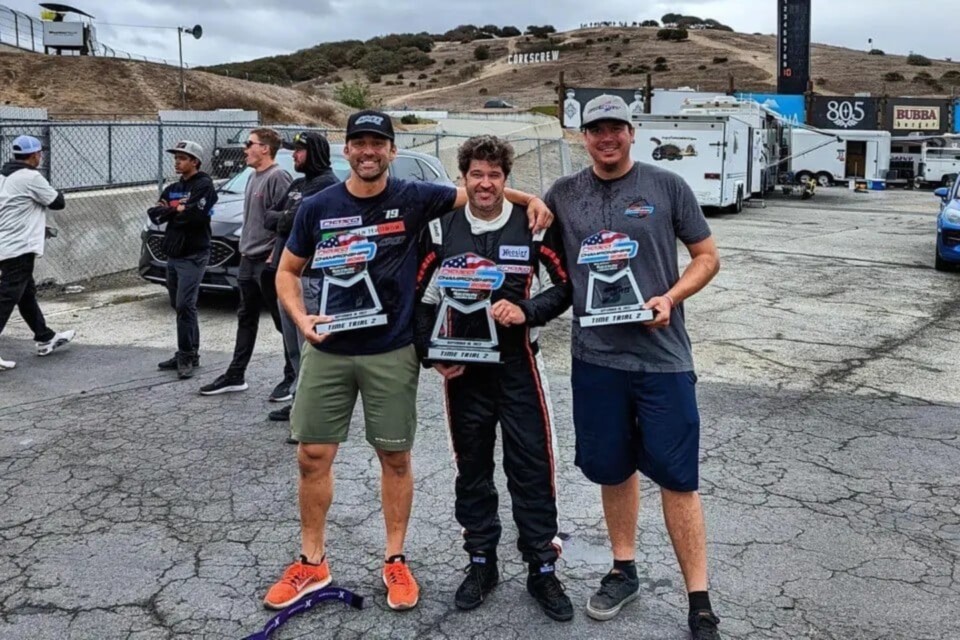
Alessandro Sensoli, Jake Latham, and Frank Pacheco took second, first, and third, respectively, in TT2 at the 2022 NASA Championships.
Pacheco and Texas-based HorsePower Research drew out plans for a replacement motor, he started thinking about the consequences of the additional 150 horsepower they had promised him. Specifically, he had to make sure his TR6060 gearbox would provide the right performance for the predicted speeds.
Unfortunately, the two final gears in the Camaro’s TR6060 are overdrives. I knew that, with the speeds I’d already been hitting, the added power would put me in fifth some of the time, which has a 0.74 ratio. That got me thinking, Should I have a custom gear made? — Frank Pacheco
6XD offered a six-speed sequential for less than some of the big transmission brands’ offerings, and allowed him to avoid adding a pricey aftermarket ECU setup. “I considered running a MoTeC, but with all the sensors and the installation, I was looking at another ten thousand. This gearbox allowed me to use the factory ECU — all I had to add was an aftermarket gearbox control unit (GCU) from Xineering.”
The practical benefits of this gearbox are numerous. This system allows for rapid shifts, does away with depressing a clutch pedal, and keeps the engine howling in the meat of its powerband more often. The 6XD simplifies the downshifting process with an auto-blip function, like the stock TR6060 did. “I’m already used to cheating,” Pacheco laughed.
The crispness of the shift itself has other benefits. Not only does it shorten shift time, but it enables stability in cornering states which, combined with a manually-clutched shift, could unbalance the car. The closer the gears are stacked together, the more often a keen driver will find themselves “in-between” gears and needing to choose between short-shifting or stretching their current gear. This box takes most of the guesswork out of the process.
Such rapid acceleration prompted Pacheco to turn to Trackspec Engineering for a cage that would futureproof whatever modifications he would later choose, and suit any NASA class he chose to enter. So detailed is the cage, if he decides to move into wheel-to-wheel racing, he shouldn’t have to do much on the safety side of things.
During the planning period before the NASA Nationals in the fall of 2024, Pacheco had laid out some pretty serious plans with HorsePower Research for his road race Camaro. “I felt like I’d explored all the stock engine had to offer. The nice thing about running the LS/LT engines is that you can have big power with just cubes, and those come fairly cheap. A 454 would get me a little closer to my power goals without having to use forced induction. I didn’t want any more supercharger problems,” he added.
The team at HR laid out a plan for a dependable atmospheric motor that would make 700 horsepower and redline around 7,000. Dalton sleeves, Callies crank and rods, Wiseco pistons, and CID heads ported by Greg Good would do the trick without undue stress.
It took nearly sixteen months before the 454 was ready. On that first shakedown, conditions were far from ideal. Willow Springs had been rained on the night before, and the strong winds provided another challenge in some of the long sweepers and over the steep crests. To add to his challenges, that day was marked by death; one of the drivers in another run group had crashed fatally on Saturday. To get one’s head in the game after all that was a tall order, but on Sunday, he set a new NASA TT1 record with a 1:20.6.
There was something left on the table, too. “Seeing as it was my first time out in the car, I’d wait until the car was pointing down the straightaway before I’d go full-throttle,” he added.
Too Fast For Fun
After stripping some weight from the car and adding a Daly dry sump, he attended the Global Time Attack event at Podium Club outside of Phoenix and won his class. Feeling confident, he attended the Global Time Attack Finals at Buttonwillow that November armed with a set of Yokohama slicks – the first time he’d ever run them. Halfway through his first practice session, the car quit in the middle of Bus Stop: a fast right-left that requires careful usage of the curbing for a quick time.
As he later verified through his ECU, the impact sensors had gone off and convinced the ECU that the car had crashed, which meant he needed to be pulled off track. After diagnosing the problem and getting back out on track the following morning, he began his first hot lap with some trepidation. Sure enough, the car died in the exact same spot. This time, the scan tool didn’t reveal anything. He tried to calibrate the yaw sensors, but they wouldn’t respond. So he towed the car home.
The next day, he pulled the data from the airbag module. This revealed that the car had seen what it considered to be alarming roll rates and it was shutting off in an attempt to prevent a rollover. It was simply that he’d picked stickier tires than the ECU was designed for, and with the way the slick-shod Camaro was navigating Bus Stop’s curbs that day, the car’s extreme body language had been misinterpreted. Using a lot of curb there, the roll rate was too extreme for the ECU, which thought the car was about to roll over.
Unwilling to be hindered by factory systems, he decided to rip everything out. “The accelerometer is in the airbag module, and that means that if you delete that, the ABS, the e-Diff, and the rest of the systems don’t receive the necessary info and go into a failsafe mode.”
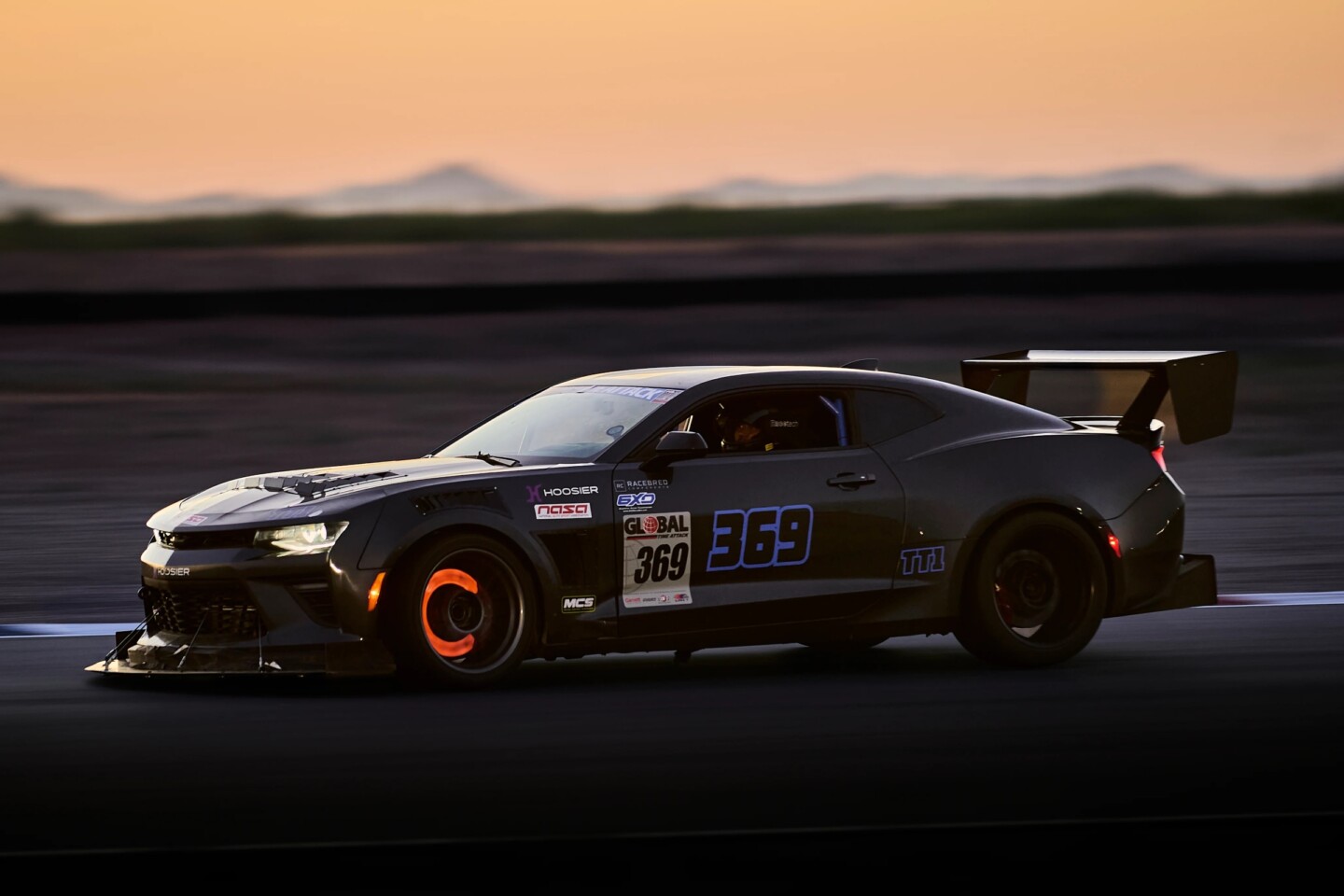
During this electronic overhaul, he made sure to upgrade the ABS to Bosch Mk60 ABS with the Continental Motorsport firmware.
To have full control over his road race Camaro in any situation, he installed a Haltech Nexus R5 standalone VCU — and picked this particular model because it came with plenty of information, reference material, and wiring diagrams. These are all useful resources for someone doing it themselves.
To save himself from headache, he bought a pre-terminated gen-four LS harness, adapted it to the LT, and since the Haltech cannot support the LT’s direct injection, he converted the engine to port injection. To do away with the e-diff, another potential hangup, he installed a base-model sixth-gen differential in the car for the time being, though he’s planning on a fifth-gen differential as it isn’t sealed like a sixth-gen’s.
End of the Tunnel
Though converting the motor to port injection will sap some power, he can spare a few ponies. Even if he’s down twenty horsepower, he’ll have saved nearly one hundred pounds in modules and wiring. Seems like a fair tradeoff at this power-to-weight ratio. In fact, the anticipated lexan windows and titanium exhaust should strip another hundred or so pounds. With this road race Camaro weighing 3,200 pounds and over 600 horsepower, it might even have to be detuned to run NASA TT1.
As he nears the end of this long road, he has mixed feelings. “I should have bought a Camaro GT4.R and saved myself the trouble. All kidding aside, I think this car is going to be insanely fast now that it’s lighter and without the factory electronics to tiptoe around.”
One grueling project after another, this road race Camaro build has served to educate him on the realities of racing a large, powerful car. Pacheco’s analytical mind and objectivity gave him a sense of where the right path was, and so was able to rectify most of his problems and shape a driving ethos that would make it possible to grow as a driver while improving his vehicle. If Pacheco has a penchant for excess, at least he’s learned how to temper it.




